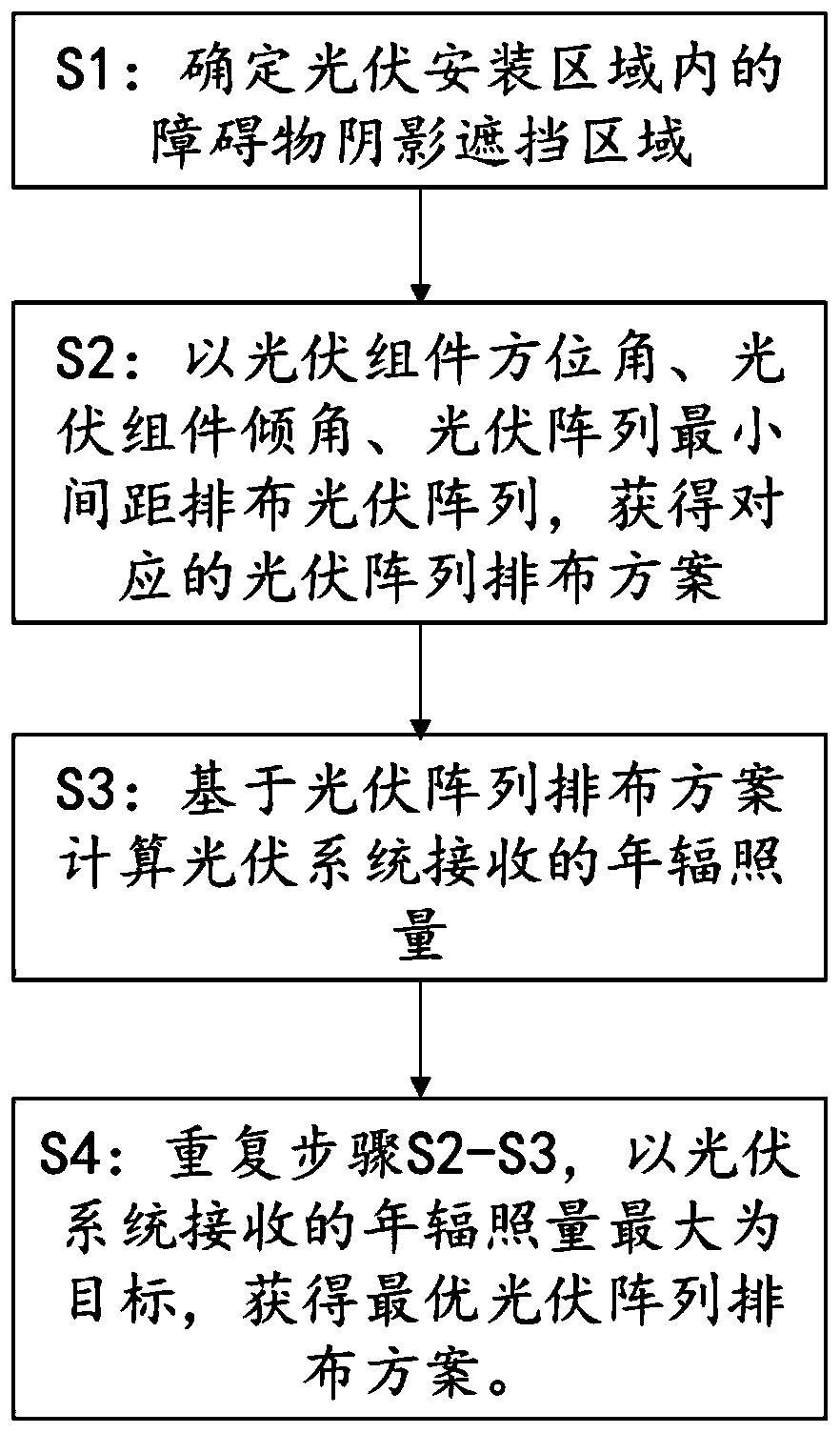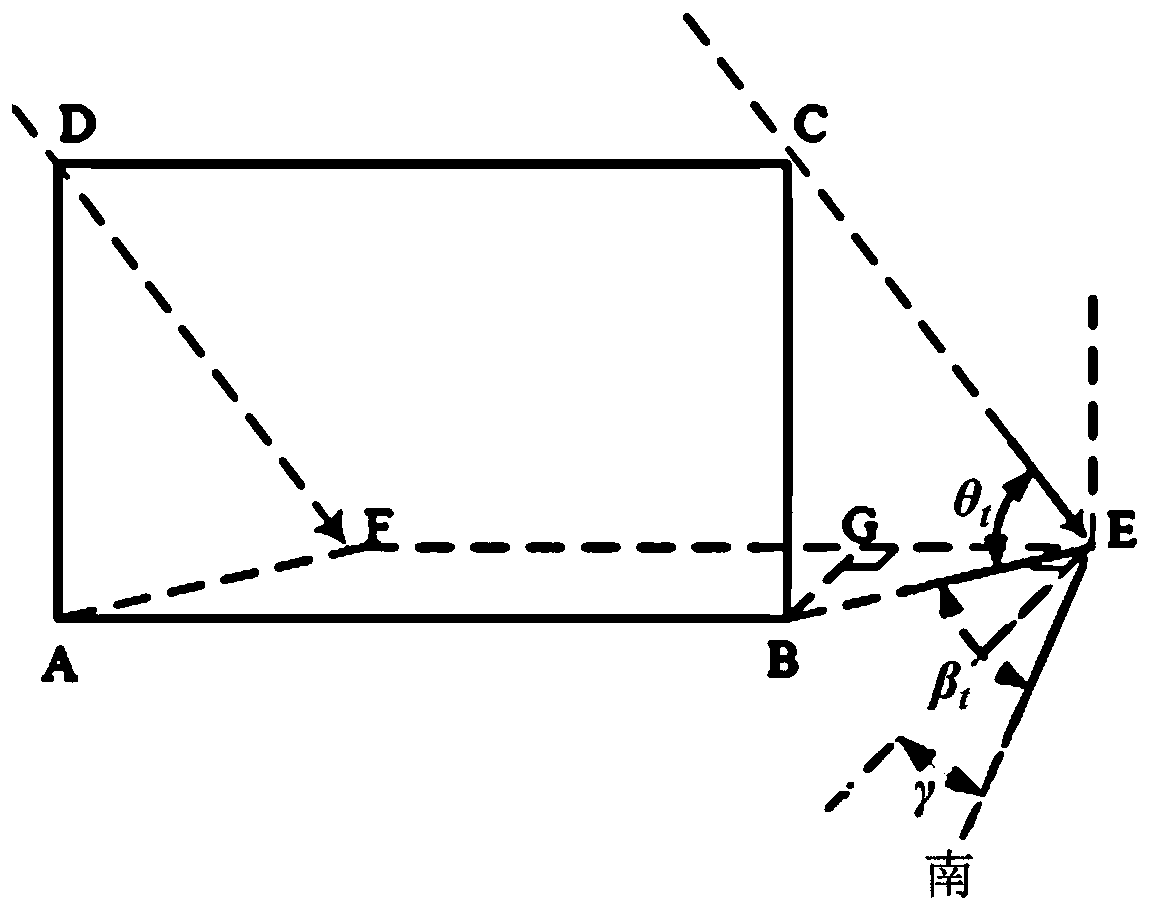Photovoltaic array arrangement method and photovoltaic array arrangement scheme automatic generation system
A photovoltaic array and photovoltaic system technology, applied in the direction of instruments, data processing applications, design optimization/simulation, etc., can solve the problem of single scene, failure to reach system installation capacity, system annual power generation arrangement results, failure to deal with irregular installation areas, Problems such as multiple obstacles and shadows in multiple installation areas
- Summary
- Abstract
- Description
- Claims
- Application Information
AI Technical Summary
Problems solved by technology
Method used
Image
Examples
Embodiment 1
[0093]Embodiment 1 provides a photovoltaic array arrangement method, wherein the photovoltaic array includes at least one photovoltaic module, and the photovoltaic modules are arranged according to the installation azimuth angle of the photovoltaic module and the installation inclination angle of the photovoltaic module, and the distance between adjacent photovoltaic arrays is at least one photovoltaic array The spacing is arranged in parallel. Such as figure 1 As shown, the photovoltaic array arrangement method includes the following steps:
[0094] S1: Determine the shadowed area of obstacles in the photovoltaic installation area, and take the area outside the shadowed area of obstacles in the photovoltaic installation area as the actual installable area;
[0095] S2: In the actual installable area, arrange the photovoltaic arrays according to the azimuth angle of the photovoltaic modules, the inclination angle of the photovoltaic modules, and the minimum spacing of the...
Embodiment 2
[0101] Embodiment 2 provides a photovoltaic array arrangement method, wherein the photovoltaic array includes at least one photovoltaic module, and the photovoltaic modules are arranged according to the installation azimuth angle of the photovoltaic module and the installation inclination angle of the photovoltaic module, and the distance between adjacent photovoltaic arrays is at least one photovoltaic array The spacing is arranged in parallel. The photovoltaic array arrangement method includes the following steps:
[0102] S1: Determine the shadowed area of obstacles in the photovoltaic installation area, and use the area outside the shadowed area of obstacles in the photovoltaic installation area as the actual installable area.
[0103] There are many types of obstacles and different shapes. In order to unify and simplify the obstacle model, all obstacles are equivalent to a three-dimensional figure composed of multiple vertical rectangular surfaces, and the height of e...
Embodiment 3
[0150] Embodiment 3 discloses a photovoltaic array arrangement method. Compared with Embodiment 2, in Embodiment 3, after 1-4 photovoltaic modules are arranged side by side to form a photovoltaic module group, the photovoltaic array is arranged, such as Figure 12 shown. Suppose the coordinates of point A are (x, y), then the coordinates of point B are (x+w cosγ, y-w sinγ), and the coordinates of point C are (x+w cosγ+l sinγ, y-w sinγ+l cosγ ), the coordinates of point D are (x+l sinγ, y+l cosγ), the coordinates of point E are (x, y)+n (w cosγ, -w sinγ), and the coordinates of point F are (x+ l·sinγ,y+l·cosγ)+n·(w·cosγ,-w·sinγ). In the formula, l is the length of the photovoltaic module, w is the width of the photovoltaic module, and γ is the installation azimuth of the photovoltaic module.
[0151] Further, the above-mentioned steps S2-S4 are carried out for photovoltaic module groups with different numbers of parallel rows, and the corresponding photovoltaic array arrangem...
PUM
 Login to View More
Login to View More Abstract
Description
Claims
Application Information
 Login to View More
Login to View More - R&D
- Intellectual Property
- Life Sciences
- Materials
- Tech Scout
- Unparalleled Data Quality
- Higher Quality Content
- 60% Fewer Hallucinations
Browse by: Latest US Patents, China's latest patents, Technical Efficacy Thesaurus, Application Domain, Technology Topic, Popular Technical Reports.
© 2025 PatSnap. All rights reserved.Legal|Privacy policy|Modern Slavery Act Transparency Statement|Sitemap|About US| Contact US: help@patsnap.com



